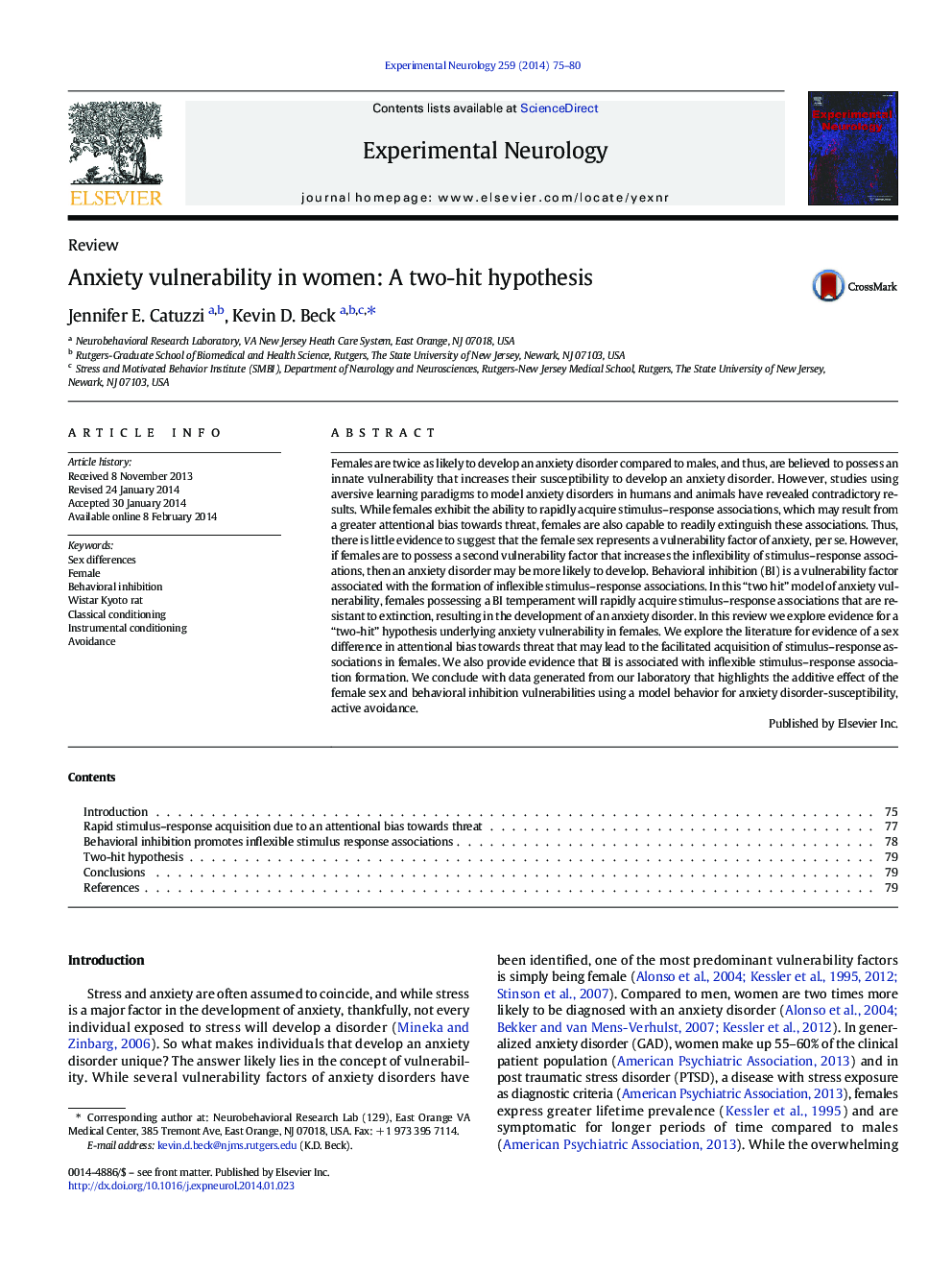| کد مقاله | کد نشریه | سال انتشار | مقاله انگلیسی | نسخه تمام متن |
|---|---|---|---|---|
| 3055480 | 1580173 | 2014 | 6 صفحه PDF | دانلود رایگان |
• Female anxiety vulnerability stems from increased conditioning acquisition rates under conditions of perceived threat.
• Additional factors may contribute to female vulnerability, which actually cause an additive effect that is pathological.
• Behaviorally inhibited temperament affects classical conditioning acquisition and extinction rates.
• Females with behavioral inhibition acquire active avoidance faster and extinguish slower than males or those not inhibited.
Females are twice as likely to develop an anxiety disorder compared to males, and thus, are believed to possess an innate vulnerability that increases their susceptibility to develop an anxiety disorder. However, studies using aversive learning paradigms to model anxiety disorders in humans and animals have revealed contradictory results. While females exhibit the ability to rapidly acquire stimulus–response associations, which may result from a greater attentional bias towards threat, females are also capable to readily extinguish these associations. Thus, there is little evidence to suggest that the female sex represents a vulnerability factor of anxiety, per se. However, if females are to possess a second vulnerability factor that increases the inflexibility of stimulus–response associations, then an anxiety disorder may be more likely to develop. Behavioral inhibition (BI) is a vulnerability factor associated with the formation of inflexible stimulus–response associations. In this “two hit” model of anxiety vulnerability, females possessing a BI temperament will rapidly acquire stimulus–response associations that are resistant to extinction, resulting in the development of an anxiety disorder. In this review we explore evidence for a “two-hit” hypothesis underlying anxiety vulnerability in females. We explore the literature for evidence of a sex difference in attentional bias towards threat that may lead to the facilitated acquisition of stimulus–response associations in females. We also provide evidence that BI is associated with inflexible stimulus–response association formation. We conclude with data generated from our laboratory that highlights the additive effect of the female sex and behavioral inhibition vulnerabilities using a model behavior for anxiety disorder-susceptibility, active avoidance.
Journal: Experimental Neurology - Volume 259, September 2014, Pages 75–80
